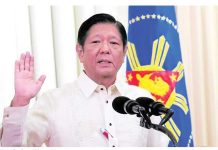
BY JAZMIN BANAL
STORYTELLING might not immediately come to mind when we think about democracy. But consider Cartoonist Zach and the Professional Heckler, Mighty Magulang, Paulo Alcazaren, and Celine Murillo. They convey messages and values in the service of the Filipino.
The traditional press, which is supposed to be the fourth estate in every democracy, is depicted with a tone of seriousness and structure. It’s associated with a noble function, vetting and editorial standards, self-regulation, and industry ethics. However, the news media has been losing its audience. The latest Digital News Report from the Reuters Institute shows that television usage and print media consumption in the Philippines have declined between 2020 and 2024, from 66% to 46% and 22% to 13%, respectively. In contrast, the audience reach of online sources including social media has made it to 82%.
Online, we get exposed to something different, for instance the so-called content creators. They provide their narratives. They communicate as alternative voices.
Tarantadong Kalbo, for example, uses a social media platform and it’s all political commentary and slice of life. His August 20 post about the Department of Education’s proposed P10 million budget for a children’s book about the head of its office elicited 162k reactions. The following week, after a lawyer implicated in POGOs called on the public for support against the administration, Tarantadong Kalbo released a drawing of three hands — one green, one red, one gray — with the caption, “Sa laban ng kadiliman at kasamaan, talo ang taumbayan.” The post was shared 15k times.
In creating comic strips online that touch on social issues, Tarantadong Kalbo said he was influenced by Pugad Baboy, the satire on Filipino politics and culture that started in the late 80s. “Patatawanin ka muna niya (tapos) mapapaisip ka. You can agree or disagree doon sa sinabi ni sir Pol (Medina Jr.) pero ang importante doon ay pinaisip ka niya.”
This knack of starting a conversation is so special. It can be used to impart knowledge, develop an analytical mind, and call for action. It can inspire. It can persuade. It can affect emotions and change behavior. In the same way that Your Tita Baby, a Gen Xer and Drag Race Philippines Season 3 contender, can connect with millennials and baby boomers, using an auntie character and the medium of drag to talk about disinformation, the ability to use a language outside of what is commonly acceptable in traditional media and tell the stories that one identifies with, allows diversity and relatability. This is powerful in pursuing public interest conversations especially when we consider that Filipinos are found in different parts of the world. As journalist Cheche Lazaro said, “in today’s milieu, na meron tayong social media and content creators, we are reaching Filipinos all over. Our content creators today are giving us an opportunity to see ourselves through another style of delivering the news and delivering commentary.”
Those aged 18 to 34 are interested in this creative sector, less so in journalism. To engage them, the Quezon City Government partnered with media and academic organizations and held Maki+Fiesta last month. There were speakers who are experts in film, advertising, culinary, agriculture, design, data science, research, tech, business, entertainment, investment, and cybersecurity. There were presentations from the architect who designed the Iloilo River Esplanade and the U.P. Fine Arts graduate behind the Maginhawa Community Pantry. It was a wonderful initiative to harness the energy surrounding the internet and social media, teaching the youth from Luzon, Visayas, and Mindanao about the values and skills necessary to thrive as a creative.
In the words of Adman Rehmat from the International Media Support of Pakistan, “What is society if not people and their stories? Societies are driven by stories and stories are driven by storytellers.” In the end, we all tell stories. At tayong taumbayan ay tambay din naman ng internet. It’s important to acknowledge that in today’s media landscape, there is greater power in choosing what one wants to care about. The challenge is how to make people care. Some say, if anyone can save the Philippines, it’s the creatives. But where are they? Are they ready? Are they even interested to pitch in? The task won’t be easy. They will need support if we want them to become partners in nation-building. And people will have to trust them if they want to claim the right to speak for others. This understanding will, hopefully, lead to a vibrant creative industry, one that takes in the environment, analyzes the data, delivers the relevant messages, and develops ethical communicators and storytellers./PN







